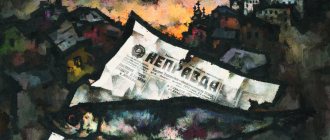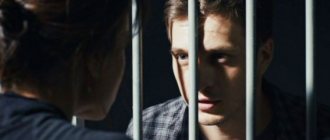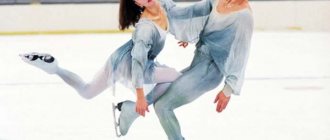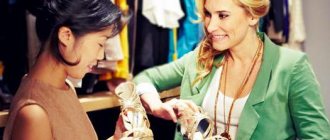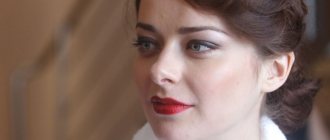Biography
Pablo Picasso is a Spanish painter, the founder of Cubism, and according to a 2009 poll by The Times, the most famous artist of the 20th century.
The future genius was born on October 25, 1881 in Andalusia, in the village of Malaga. Father Jose Ruiz was a painter. Ruiz did not become famous for his work, so he was forced to get a job at a local fine art museum as a caretaker. Mother Maria Picasso Lopez belonged to a wealthy family of grape plantation owners, but from childhood she experienced firsthand what poverty was, since her father abandoned the family and moved to America.
Pablo Picasso in childhood
When Jose and Maria had their first child, he was christened with the name Pablo Diego Jose Francisco de Paula Juan Nepomuceno Maria de los Remedios Crispin Crispignano de la Santisima Trinidad Ruiz y Picasso, in which, according to tradition, revered ancestors and Catholic saints were indicated. After the birth of Pablo, two more girls appeared in the family - Dolores and Conchita, whom their mother loved less than her adored son.
The boy was very handsome and talented. At the age of 7, he already began to help his father in painting canvases. At the age of 13, Jose allowed his son to complete a large part of the work and was very surprised by Pablo's skill. After this incident, the father gave all his art supplies to the boy, and he himself stopped writing.
Casa Museo Picasso (La Coruña)
The Picasso House Museum in A Coruña has been open since 2002. The artist's family lived in this typical Galician mansion from 1891 to 1895. 33 works are collected here, 4 of which are drawings by the artist’s father, a professor and teacher of fine arts. Everything was created during his life in La Coruña, when the young artist was already publishing his drawings and caricatures in local newspapers. The interiors of the mansion have been carefully restored and kept intact. Entrance to the museum is free.
Address: Calle Payo Gómez, 14, La Coruña.
Studies
In the same year, the young man entered the Academy of Arts in Barcelona. It was not without difficulty that Pablo managed to convince the teaching staff of the university of his professional worth. After three years of study, having gained experience, the young student is transferred to Madrid to the prestigious San Fernando Academy, where for six months he studies the techniques of the work of Spanish artists Diego Velazquez, Francisco Goya and El Greco. Here Picasso creates the paintings “First Communion”, “Self-Portrait”, “Portrait of a Mother”.
Due to his wayward character and free lifestyle, the young painter was unable to stay within the walls of the educational institution, therefore, having dropped out of school, Pablo set off on a free voyage. By that time, his close friend was the equally obstinate American student Carles Casagemas, with whom Pablo repeatedly visited Paris.
The friends devoted their first trips to studying the paintings of Delacroix, Toulouse Lautrec, Van Gogh, Gauguin, as well as ancient Phoenician, Egyptian frescoes, and Japanese engravings. The young people made acquaintances not only with bohemians, but also with wealthy collectors.
Creation
For the first time, Pablo begins to sign his own paintings with the pseudonym Picasso, his mother's maiden name. In 1901, a tragedy occurred that left its mark on the artist’s work: his friend Carles commits suicide due to unhappy love. In memory of this event, Pablo creates a number of paintings that are usually attributed to the first “Blue Period”.
The abundance of blue and gray colors in the paintings is explained not only by the depressed state of the young man, but also by the lack of funds for oil paint of other shades. Picasso paints the works “Portrait of Jaime Sabartes”, “Rendezvous”, “Tragedy”, “Old Jew with a Boy”. All paintings are permeated with a feeling of anxiety, despondency, fear and melancholy. The writing technique becomes angular, torn, perspective is replaced by the rigid contours of flat figures.
Painting by Pablo Picasso “Rendezvous”
In 1904, despite the lack of finances, Pablo Picasso decided to move to the capital of France, where new impressions and events awaited him. The change of residence gave impetus to the second period of the artist’s work, which is usually called “Pink”. The cheerfulness of the paintings and their plot lines were largely influenced by the place where Pablo Picasso lived.
At the base of the Montmartre Hill stood the Medrano Circus, whose performers served as a model for the young artist’s works. In two years, a whole series of paintings was painted: “Actor”, “Seated Nude”, “Woman in a Shirt”, “Acrobats. Mother and Son", "Family of Comedians". In 1905, the most significant painting of this period, “Girl on a Ball,” appeared. After 8 years, the painting was acquired by Russian philanthropist I. A. Morozov, who brought it to Russia. In 1948, “Girl on a Ball” was exhibited at the Museum. A.S. Pushkin, where it is still located.
Paintings by Pablo Picasso “Girl on a Ball” and “Woman in a Shirt”
The artist gradually moves away from depicting nature as such; modernist motifs appear in his work using pure geometric shapes, which make up the structure of the depicted object. Picasso intuitively approached a new direction when he created a portrait of his admirer and philanthropist Gertrude Stein.
At the age of 28, Picasso painted the painting “Les Demoiselles d’Avignon,” which became the predecessor of works painted in the style of cubism. The portrait ensemble, which depicted naked beauties, was met with a large stream of criticism, but Pablo Picasso continued to develop the direction he had found.
Painting in the cubist style by Pablo Picasso “Les Demoiselles d’Avignon”
Since 1908, the paintings “Can and Bowls”, “Three Women”, “Woman with a Fan”, “Portrait of Ambroise Vollard”, “Factory in Horta de San Juan”, “Portrait of Fernanda Olivier”, “Portrait of Kahnweiler”, “ Still life with a wicker chair”, “Bottle of Pernod”, “Violin and guitar”. New works are characterized by a gradual increase in poster-like images, approaching abstractionism. Finally, Pablo Picasso, despite the scandal, begins to earn good money: paintings painted in a new style bring profit.
In 1917, Pablo Picasso was given the opportunity to collaborate with Sergei Diaghilev's Russian Seasons. Jean Cocteau proposed to the ballet master the candidacy of a Spanish artist as the creator of sketches for the scenery and costumes of new productions. To work for a while, Picasso moved to Rome, where he met his first wife Olga Khokhlova, a Russian dancer, the daughter of an emigrated officer.
Olga Khokhlova and Sergei Diaghilev
The bright period of his life was also reflected in the artist’s work - for a while, Picasso moved away from cubism and created a number of canvases in the spirit of classical realism. These are, first of all, “Portrait of Olga in an Armchair”, “Bathers”, “Women Running on the Beach”, “Children’s Portrait of Paul Picasso”.
Surrealism
Fed up with the life of a wealthy bourgeois, Pablo Picasso returns to his former bohemian existence. The turning point was marked by the painting of the first painting in the surrealist manner, “Dance,” in 1925. The distorted figures of the dancers and the general feeling of morbidity settled in the artist’s work for a long time.
Painting by Pablo Picasso “Girl in front of a mirror”
Dissatisfaction with his personal life was reflected in Picaso’s misogynistic paintings “Mirror” and “Girl in Front of a Mirror”. In the 30s, Pablo became interested in creating sculptures. The works “Reclining Woman” and “Man with a Bouquet” appeared. One of the artist’s experiments is the creation of illustrations in the form of engravings for the works of Ovid and Aristophanes.
War period
During the years of the Spanish revolution and war, Pablo Picasso was in Paris. In 1937, the artist created the canvas “Guernica” in black and white tones commissioned by the Spanish government for the World Exhibition in Paris. A small town in northern Spain was completely razed to the ground in the spring of 1937 by German aircraft. The people's tragedy is reflected in the collective images of a dead warrior, a grieving mother, and people cut into pieces. Picasso's symbol of war is the image of a Minotaur bull with large, indifferent eyes. Since 1992, the canvas has been kept in the Madrid Museum.
Pablo Picasso's painting "Guernica"
At the end of the 30s, the paintings “Night Fishing in Antibes” and “Crying Woman” appeared. During the war, Picasso did not emigrate from German-occupied Paris. Even in cramped living conditions, the artist continued to work. Themes of death and war appear in his paintings “Still Life with a Bull Skull”, “Morning Serenade”, “Slaughterhouse” and the sculpture “Man with Lamb”.
Museo Picasso (Buitrago del Lozoya, Madrid)
The heart of this museum, opened in 1985, is the collection of hairdresser and artist friend Eugenio Arias. Arias transferred his collection as a gift from France in 1982, and the location for opening the museum was his condition - he wanted to make a gift to his hometown.
The collection consists of 65 works: drawings, lithographs, posters and ceramics. Here is the only work by Picasso using the technique of pyrography, or burning. The museum also houses many photographs and artifacts relating to the life of Picasso, his friendship with Arias and other compatriots.
Address: Plaza de Picasso, 1, Buitrago del Lozoya, Madrid.
Website: www.madrid.org/museopicasso
Post-war time
The joy of life again inhabits the master’s paintings created in the post-war period. The colorful palette and bright images were embodied in the cycle of life-affirming panels that Picasso created for a private collection in collaboration with the artists Paloma and Claude Already.
Painting by Pablo Picasso “Dove of Peace”
Ancient Greek mythology became Picasso’s favorite theme of this period. It is embodied not only in the master’s paintings, but also in ceramics, which Picasso became interested in. In 1949, the artist painted the canvas “Dove of Peace” for the World Peace Congress. The master also creates variations in the style of cubism on the themes of painters of the past - Velazquez, Goya, Manet.
Fundació Palau (Barcelona)
The Palau Foundation, which houses about 50 works by the master, is the second Picasso museum in Catalonia in terms of the number of works exhibited. The foundation was created in 2003 to preserve the artist’s works, donated to the founder of the exhibition, writer Josep Palau i Fabre, by Picasso himself, with whom he maintained close relations for 25 years. There is a little-known self-portrait by Picasso, a puppet show created by the artist for his daughter Maya. Entrance – 5 euros.
Address: Carrer Riera, 54, Caldes d'Estrac, Barcelona.
Website: www.fundaciopalau.cat
Personal life
From a young age, Picasso was constantly in love with someone. In his youth, models and dancers became the aspiring artist’s friends and muses. Young Pablo Picasso experienced his first love while studying in Barcelona. The girl's name was Rosita del Oro, she worked in a cabaret. In Madrid, the artist met Fernando, who became his faithful friend for several years. In Paris, fate brought the young man together with the miniature Marcelle Humbert, whom everyone called Eva, but the sudden death of the girl separated the lovers.
Pablo Picasso and Marcel Humbert
While working in Rome with a Russian ballet troupe, Pablo Picasso marries Olga Khokhlova. The newlyweds got married in a Russian church on the outskirts of Paris, and then moved to a mansion on the seashore. The girl's dowry, as well as income from the sale of Picasso's works, allowed the family to lead the life of a wealthy bourgeois. Three years after the wedding, Olga and Pablo have their first child, son Paulo.
Pablo Picasso and Olga Khokhlova
Soon Picasso becomes fed up with the good life and again becomes a free artist. He settles separately from his wife and begins dating a young girl, Marie-Therese Walter. From an extramarital union in 1935, a daughter, Maya, was born, whom Picasso never recognized.
During the war, the artist's next muse became a Yugoslav citizen, photographer Dora Maar, who with her creativity pushed the artist to search for new forms and content. Dora went down in history as the owner of a large collection of Picasso paintings, which she kept until the end of her life. Her photographs of the canvas “Guernica” are also known, which show the entire process of creating the painting step by step.
Pablo Picasso with Françoise Gilot
After the war, the artist met Françoise Gilot, who introduced a note of joy into his work. Children are born - son Claude and daughter Paloma. But in the early 60s, Jacqueline left the master because of his constant betrayals. The last muse and second official wife of the 80-year-old artist is the ordinary saleswoman Jacqueline Rock, who idolized Pablo and had a great influence on his social circle. After Picasso's death, 13 years later, Jacqueline could not stand the separation and committed suicide.
Museo Picasso (Malaga)
The Picasso Museum in Malaga arose at the request of the artist himself. The idea for the creation was born in 1953, but was realized only in 1992, when the wife of his late son, Cristina Ruiz-Picasso, organized an exhibition for her father-in-law in Malaga. In 2003, 50 years after it was conceived, the museum was inaugurated by King Juan Carlos and Queen Sofia.
The museum's collection includes 233 works by the master, covering a huge period from early academic works to innovative masterpieces of the middle of the last century and mature paintings of recent years. The permanent exhibition is called "Eight Decades of Picasso's Art" and shows step by step the different eras of the famous artist's work between 1892 and 1972. With this, the museum fulfills the request of the master, who dreamed of sharing his heritage with his hometown.
The museum is currently hosting the exhibition “Games of the Eye,” dedicated to the theme of the gaze in Picasso’s portraits. He attached great importance to the expression in the eyes of the models depicted in his canvases, and visitors can appreciate the magic of their gaze. The exhibition is open until September 11, 2016.
The cost of visiting the permanent and temporary exhibition is 8 euros. From March to June and in September-October it is open from 10:00 to 19:00, in July-August - until 20:00, from November to February - until 18:00, there is an audio guide in Russian.
Address: Palacio de Buenavista, Calle San Agustin, 8, Málaga.
Website: www.museopicassomalaga.org
Death
In the 60s, Picasso devoted himself entirely to creating portraits of women. His last wife, Jacqueline Roque, poses for the artist as a model. By the end of his life, Pablo Picasso already had a multi-million dollar fortune and several personal castles.
Monument to Pablo Picasso
Three years before the death of the genius, a museum named after him was opened in Barcelona, and 12 years after his death, a museum was opened in Paris. During his long creative biography, Picasso created 80 thousand canvases, more than 1000 sculptures, collages, drawings, and prints.
On April 8, 1973, due to pneumonia, the heart of the 92-year-old genius stopped.
Museu Picasso (Barcelona)
In 1960, Picasso's close friend and secretary Jaime Sabartes decided to donate his collection of the artist's paintings and organize a museum in Barcelona. In 1963, a museum called the Sabartes Collection opened in the Gothic Palace of Berenguer d'Aguilar. Today it is known as the Picasso Museum and already occupies 5 mansions, because after the death of Sabartes, Picasso himself donated a significant share of his creations to the museum. Today, the museum holds more than 4 thousand of his works, this is the largest collection of Picasso in the world.
These are mainly early works from 1895 to 1904, they are arranged in strictly chronological order - from children's pencil sketches to mature works. Here you can also see paintings of the famous blue and partly pink period, created before moving to Paris. Of the earliest works, the most significant are “Science and Charity”; among the later ones, the “Las Meninas” series of 1957 is distinguished – variations on the theme of the famous Velazquez painting, as well as the “Doves” series, created in the same year in Cannes. The collection of ceramics collected here is also important, donated to the museum by the artist’s widow Jacqueline Roque, whom he, by the way, met in a ceramic shop.
From June 23 to October 23, 2020, the exhibition “Picasso Ceramics” will be held.
Open from 9:00 to 19:00, except Monday (Thursday - until 21:30). A full ticket, including the main and temporary exhibitions, costs 14 euros. There are usually long queues at the entrance, so you need to be patient and arrive early.
Address: Carrer Montcada, 15-23, Barcelona.
Website: www.museupicasso.bcn.cat
Paintings
- "First Communion", 1895-1896.
- "Girl on a Ball", 1905
- "Harlequin Seated on a Red Bench", 1905
- "Girl in a Shirt", 1905
- "Family of Comedians", 1905
- "Portrait of Gertrude Stein", 1906
- "Les Demoiselles d'Avignon", 1907
- "Young Lady", 1909
- "Mother and Child", 1922
- "Guernica", 1937
- "Crying Woman", 1937
- "Françoise, Claude and Paloma", 1951
- "Man and woman with a bouquet", 1970
- "Embraces", 1970
- "Two", 1973

